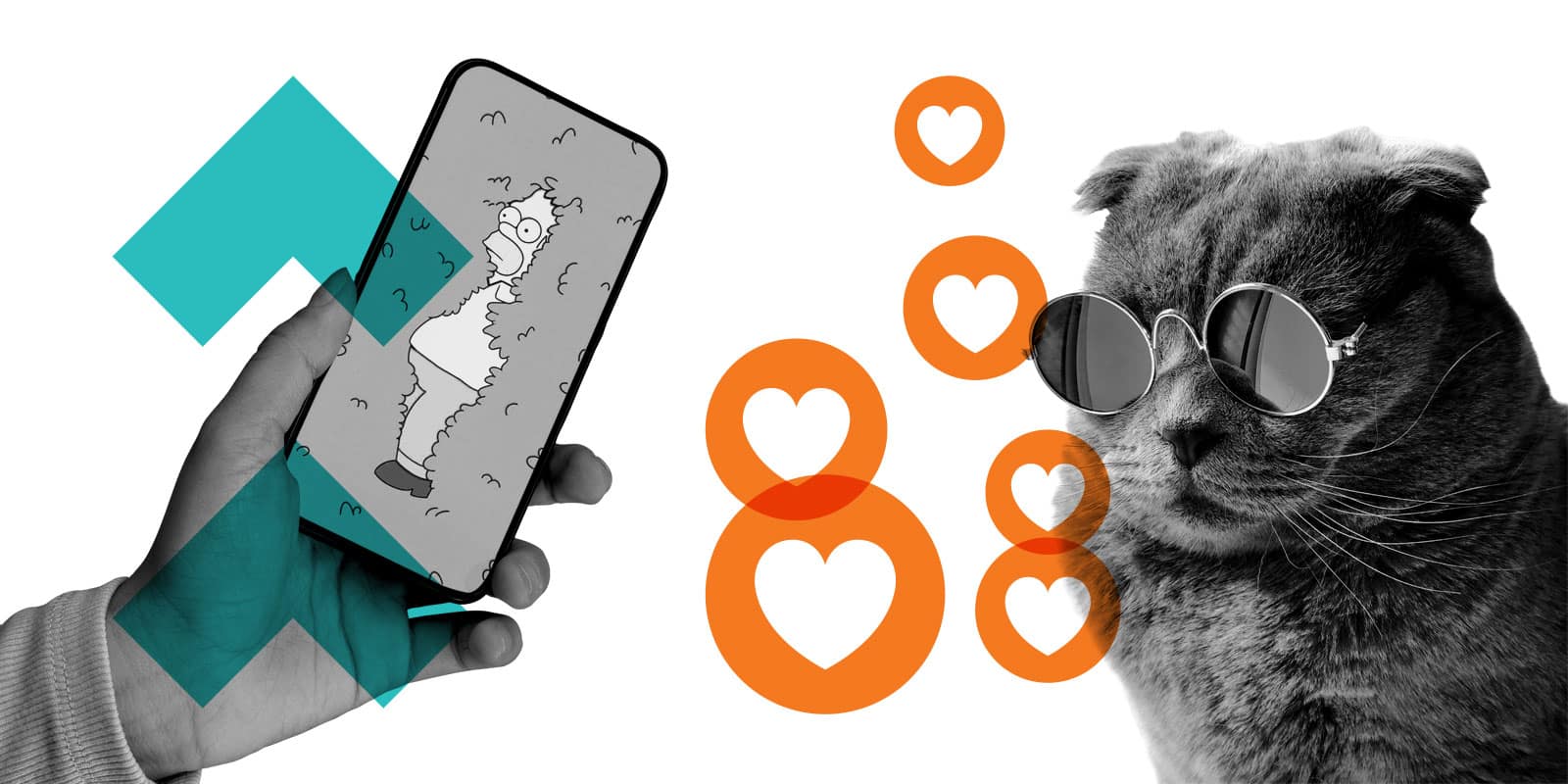Growth Trends 2023: To meme or not to meme

By Ben Levy, Strategy Partner
Open your favourite social media app right now. If your feed is anything like mine, you will be inundated with memes – short videos or images that spread around the internet sometimes with small edits and often in a humorous way. The key to a successful meme is brevity. The less “weight” a piece of information carries, the easier it is to spread.
As media consumption habits continue to shift online, especially towards social media platforms, brands are having to think differently about how they deliver communications. Many have had success in using the platforms to drive action, response and sales, but often struggle to create brand-building effects. Video ads get scrolled past, engagement campaigns deliver inconsequential results (unless you offer free stuff) and static image ads feel underwhelming at best, ignored at worst. Attention is hard to command in social media, and simply showing up how you do in other channels isn’t effective. However, by tapping into consumers’ existing culture and behaviour in these platforms, brands can make social media work. Now is the time for brands to embrace the power of meme marketing.
- Social usage surges. In a post lockdown world, according to research by Ofcom, 16-34 adults are spending over 33% of their curated commercial media day (time spent with media excluding OOH) on social media, compared to just 12% spent with live or recorded TV.
- Memes go mainstream. Research conducted by YPulse found that 55% of 13-35-year-olds send memes every week and 30% send them every day. There are a million memes shared a day on Instagram, double the amount that were shared in 2018. Memes no longer sit on the fringes of internet subculture, they provide a legitimate mainstream marketing opportunity.
- The new home of memes keeps growing. TikTok’s unique content discovery algorithm is a perfect breeding ground for mass market meme marketing. With a forecasted reach of 14.8m users, and UK teens spending over 100 minutes per day on the platform (Qustodio, 2021,) the growth of TikTok is providing a step change in the speed and scale at which marketing memes can spread.
Ten years ago, enabled by the rapid growth of YouTube, the holy grail in marketing was to create a viral video – a single piece of content, made by the brand, that travelled far and wide across the web and was shared between friends and families. Today the words “we want this to go viral” should send a shiver down the spines of media and advertising professionals. YouTube is now a graveyard of failed viral videos that achieved a million views through paid media to hit a vanity metric, but never got shared. The difference between viral marketing and meme marketing is subtle but distinct.
The trick is to not tell people what to share, but create the cultural capital so that people want to share.
Meme content is perfect for modern social media platforms. Memes are unfiltered, authentic and original and tend to be short, sharp, witty or topical. They provide attention for the brand through the lens of their online community. A perfect example of brands embracing meme marketing was the recent TikTok campaign Tesco ran where they were looking to recruit the new voice of their checkout tills. Users were encouraged to reply and respond to the Tesco video with their own take on the self-checkout script. At the time of writing, the meme videos created by the TikTok community have over 45m video views, generating around £1m of media value, as well as PR pick up in all the major national titles.
The growth opportunity:
Fame. Buzz. Attention. Salience. Whatever you call it, brands are all after the same thing. It’s the jet fuel for brand growth. Throughout the history of marketing, this has always been the case. But generating that effect has always been difficult. Delivering reach in media is necessary, but alone, it is not a guarantee of success. Brands need to be seen and noticed, yes. But crucially, they need to be remembered.
Meme marketing is a brilliant opportunity to drive a spike in fame, attention and buzz for your brand. It can create salience and top-of-mind awareness through a mix of PR, earned media, conversation, and most importantly sharing. And it’s this sharing that makes memes such an effective marketing tool. Sharing not only increases the number of people seeing your message, due to the participation and involvement, it also massively increases the likelihood of creating strong memory structures for your brand.
While meme marketing should not replace long term brand-building tactics, creating meme-worthy brand moments will create spikes of fame, buzz and attention that drive growth for your business. These can be particularly powerful when anchored to an audience segment, cultural moment or context that is important for your brand.
3 Things to do today…
Create shareable culture through content and characters.
TV shows are now writing in memeable scenes with gifs in mind for viewers to share online, increasing attention for their show, making it more salient. The same can be done by brands in other categories using brand characters and ambassadors.
Create cultural capital through radical and surprising collaborations.
Find a partner and create disruption together. Make something together that people will want to talk about and share.
Empower communities to shape the conversation in their own way.
This may be uncomfortable for brand managers who must live by set brand guidelines, but when it takes off, it’s better to embrace it, encourage it and let the meme travel far and wide.










